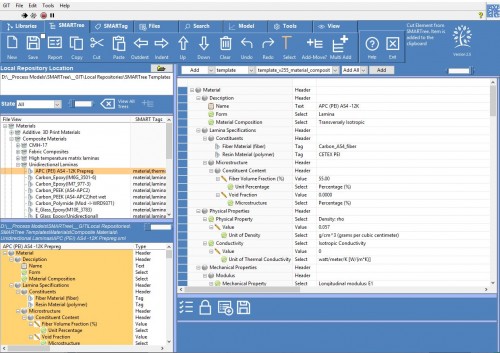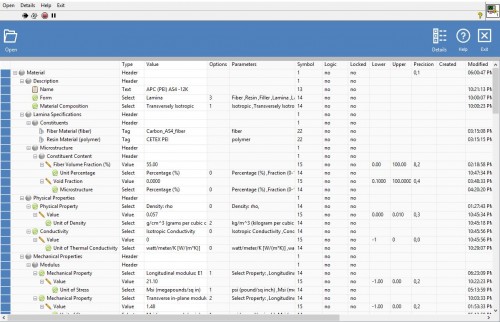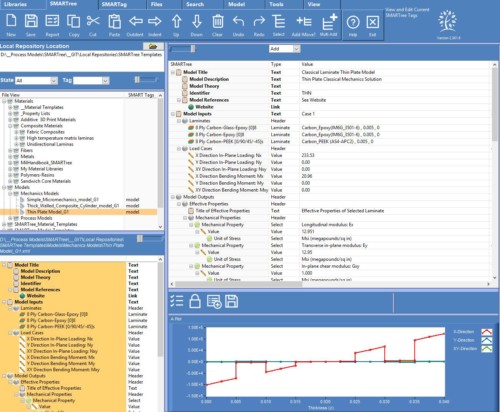Passive Trees are trees stored in locations that are loaded upon startup of the client and can be refreshed during execution. These trees and folders reside on the local machine, on a shared directory or on a cloud space.
The user can then drag these trees or subsets of these trees into the working tree. The working tree can be uploaded to this sharespace for other users to access. Users within an organization can then manage various libraries that can be synchronized or shared to users of the software.
Below are examples of commonly generated passive trees.
- ASTM Data
- Material Properties
- Test Data
- Equipment Calibration
- Vendor Information
- Safety Training
- Hardware Calibration
- MSDS Datasheets
- Equipment Manuals
- Molding and Tooling Libraries
- CMH-17 (MIL-17) Handbook
- Employee Data
Active trees are trees that have active real time content. This is data generated by sensors and equipment that automatically populates SMARTrees on a shared resource.
Laboratory sensors also populate trees that store temperature and humidity information. Other active libraries include raw material inventory, production schedules and workflow.
Below is a list of common active SMARTrees.
- Thermocouple Data
- Strain Gage Sensors
- Lab Moisture Sensors
- Process Conditions
- Geo Positioning
- Vital Signs
- Force Measurement
- Vibration
- Cameras
- Production Workflow
- Bluetooth
- Wireless
An example of this would be a tree built by a laboratory technician that is responsible for all test equipment including load cells, associated calibration data, test fixtures, gage and LVDT specifications. The technician would maintain an active library on a shared space that all test personal would have access to. When experiments are conducted, users would be required to drag active data into their experiment tree thus capturing a snapshot of conditions or equipment at that time. This data would be then saved with all test data.



